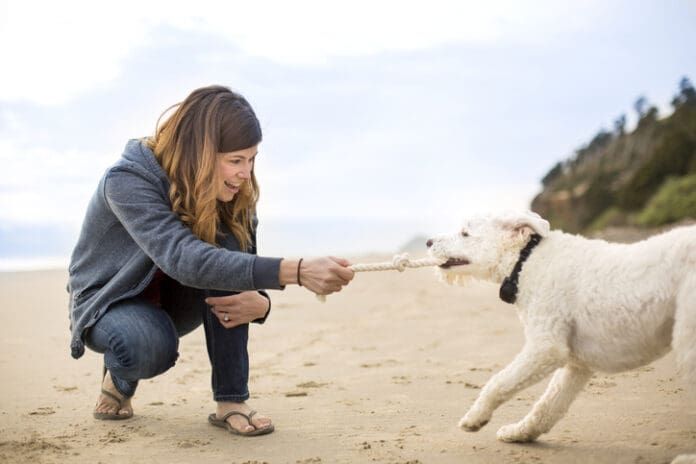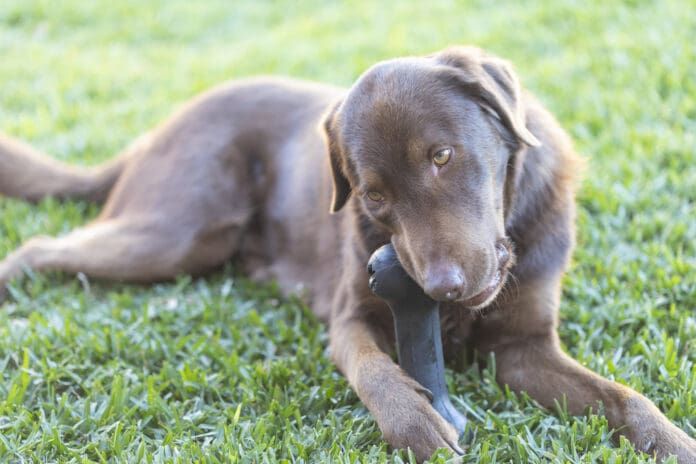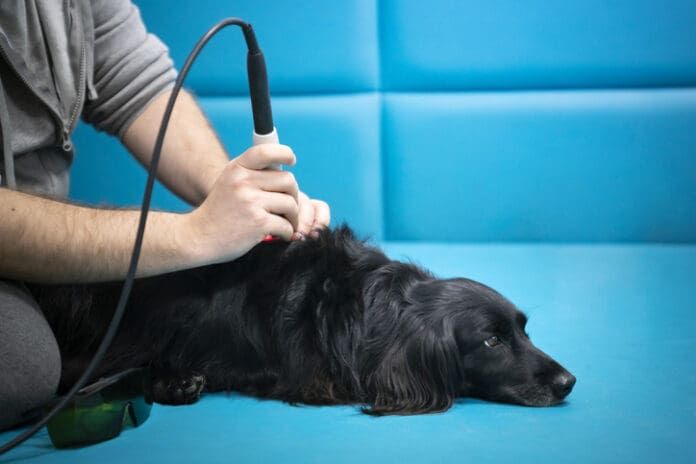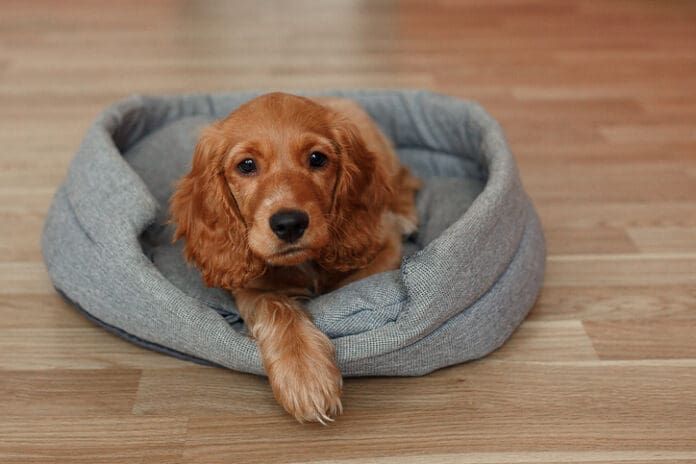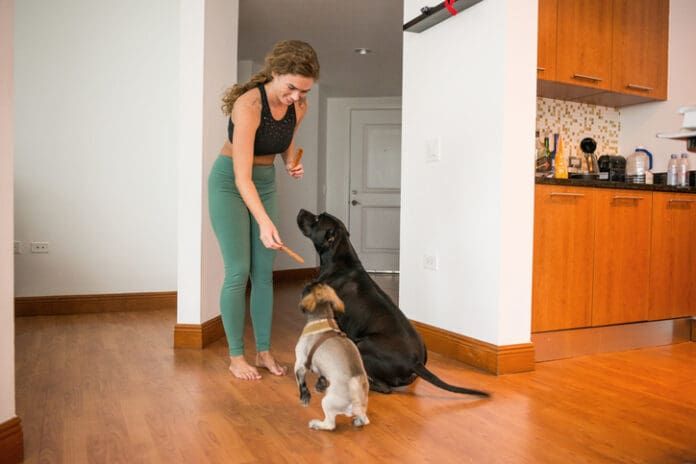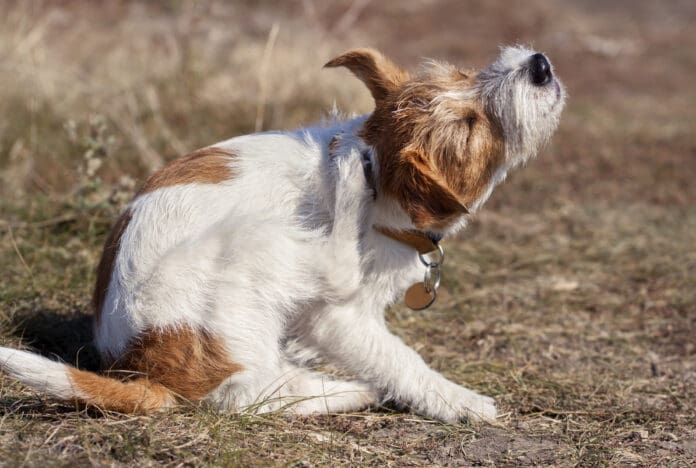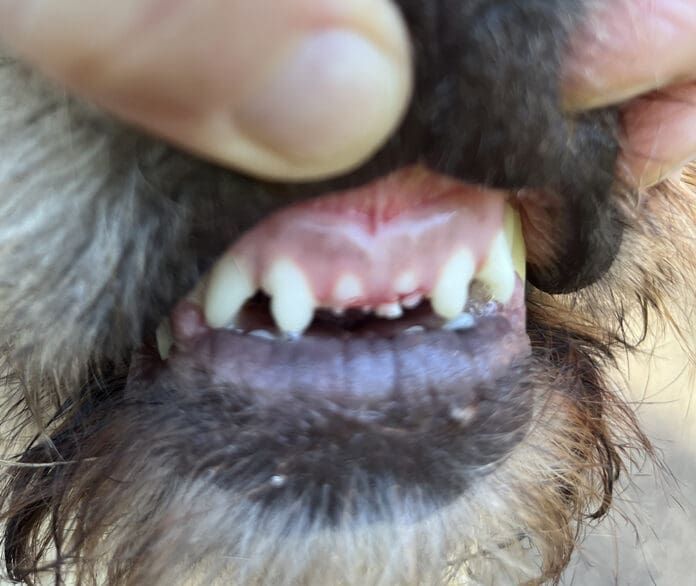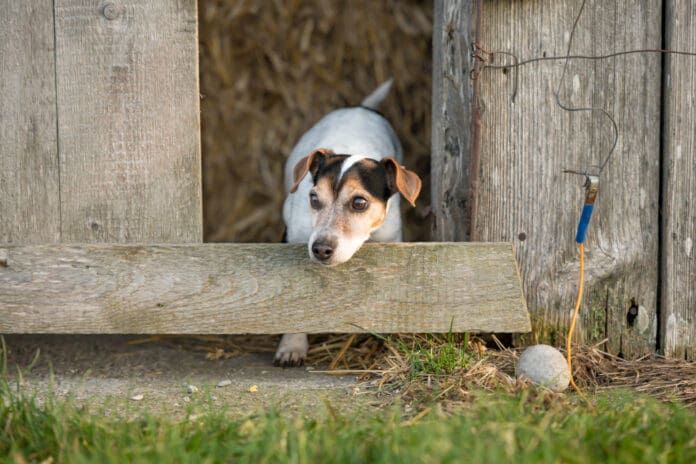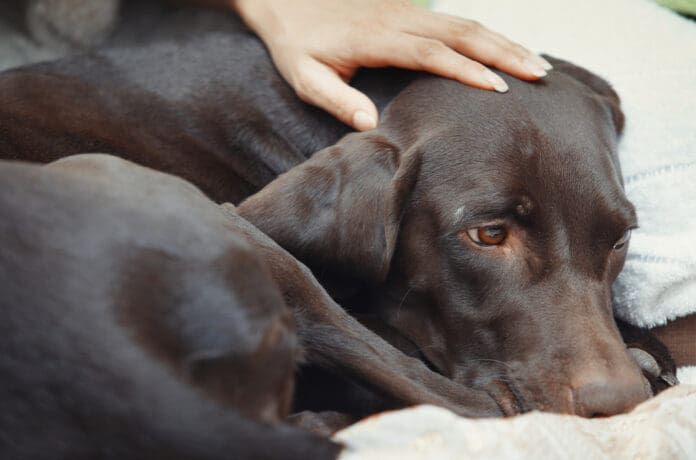Are you in need of some indestructible dog toys to keep your furry monster entertained? I’m right there with you. While no toy is truly indestructible, there are products out there that can provide your dog with a safe and durable challenge.
When to Take a Toy Away
Even the best “indestructible” dog toys will one day succumb to the efforts of our fluffy destroyers. Here are some guidelines for how to ensure your dog’s playtime is safe, plus when to throw a toy away:
- Supervise play with all toys to be sure your dog doesn’t accidentally chew off and swallow part of a toy.
- Pick up any small toy bits, stuffing, and squeakers immediately so that your dog doesn’t accidentally swallow them.
Throw toys away when their structure has been compromised
Things to Look For
Here are some qualities to keep in mind when choosing nearly indestructible dog toys for your pup:
- No small parts
- Has some give—not brittle
- Has some heft
- Minimal seams
- Appropriate size for your dog
No Small Parts
Small parts and pieces are just begging to be chewed off. If a toy has legs, horns, tentacles, or any other small projection, your dog will be able to easily fit it in the back of his mouth and saw it off with his carnassials and molars.
Also skip plastic eyes and noses. These parts are easy for any experienced canine surgeon to remove, which both creates a swallowing risk and exposes a weak point for the dog to dismantle the entire toy.
If your dog likes rope toys, keep an eye out for fraying threads. Chewed-off fibers are a choking hazard and could potentially cause an intestinal obstruction.
Resilient Dog Toy Material
The ideal toy for your master chewer should yield a little to chomps. Brittle toys are problematic for two reasons: first, they can shatter and create sharp edges that could harm your dog, and second, an unyielding chewing surface can break teeth.
Test toys with your fingernail. If you can mark the surface, it will likely yield to dog teeth. If you can’t, it is probably too hard.
For balls, you want the ball to collapse a little when squeezed, but then bounce back into shape. A round ball will last much longer than a collapsed one that creates folds for your dog to gain purchase on.
Heft
Flimsy toys don’t last long with chewers. Skip the dollar bin toys—thin rubber and gauzy fabric aren’t going to cut it.
Dense rubbery toys that feel a little heavy for their size are my favorites for chewers, as well as squeaky toys with a thick outer fabric.
Minimal Seams
Seams are weak points. One of my dogs systematically checks the seams on a new toy to identify the weakest spot and then proceeds to gut the toy. Fewer seams mean fewer opportunities for disembowelment.
Appropriate Size
The ideal toy for our heavy chewers is small enough for the dog to get in their mouth, but too big to get to the back of the mouth easily.
A toy that is too small can be lodged between your dog’s saw-like carnassial teeth and molars—game over. Tiny toys can also pose a choking hazard or swallowing risk.
A toy that is too big is impossible to grab or chew at all, and may frustrate or annoy your dog, causing him to ignore it.
The Best Indestructible Dog Toys
Here are some of the most long-lasting toys:
West Paw Rumpus
This toy has it all: compact, dense, resilient, tooth-friendly, not a seam to be seen, and comes in multiple sizes. It also floats and bounces and is made in the U.S. from non-toxic materials.
My Rumpus has served two years with a pack of three avid chewers.
West Paw Toppl and Rumbl
The Toppl and Rumbl are both treat-dispensing toys that can be filled with treats or dog food to keep your dog entertained. Freeze food inside for an added challenge for your pup.
I have Toppls of every size both to accommodate different snack sizes and to fit them together for an added challenge.
The Rumbl has been popular as a ball substitute even after my dogs get all of the goodies out.
The best part? They’re top-rack dishwasher safe for easy cleaning.
Planet Dog Balls by Outward Hound
If your dog is ball-crazy, these are the toys for you! Planet Dog balls are the only balls I trust my dogs to play with without direct supervision. They have enough give that they are fun to chomp and won’t damage teeth, but instantly bounce back into shape so your dog can’t rip off chunks.
These balls come in many variations. Smooth-surfaced options are the hardiest overall. The continents can be removed on the Earth balls, but are soft and nontoxic. The Orbee-Tuff material also smells minty fresh.
GoughNuts Rings
GoughNuts makes rubber toys in a variety of shapes and toughness levels. The colored rings are pretty darn sturdy and the black ones are the sturdiest of all. These toys are also made in the U.S.
One really cool thing about this company is that their chew toys have a red inner layer to indicate when the toy has been damaged—if the red layer is exposed, it is time to retire that toy.
Mighty Dog Toys
The Mighty Dog stuffed toys—such as Mighty Dog Toys Penny the Penguin or Mighty Dog Toys Herb the Hippo—are some of the toughest stuffed squeaky toys. These toys put up a decent fight for our canine toy destroyers.
In my experience, if one of these stuffed toys survives the first 5-10 minutes of play, it will be around for a while. If my dogs breach a seam, I remove the stuffing and squeaker and the “skin” still provides plenty of play and fun for weeks longer.
GoDog Dinos and Dragons Plush Dog Toys
These adorable squeaky toy collections don’t look as hefty as some stuffed toys, but the GoDog dinos and dragons hold up to some serious abuse thanks to their special reinforced lining. Several of them grace my dogs’ toy box!


